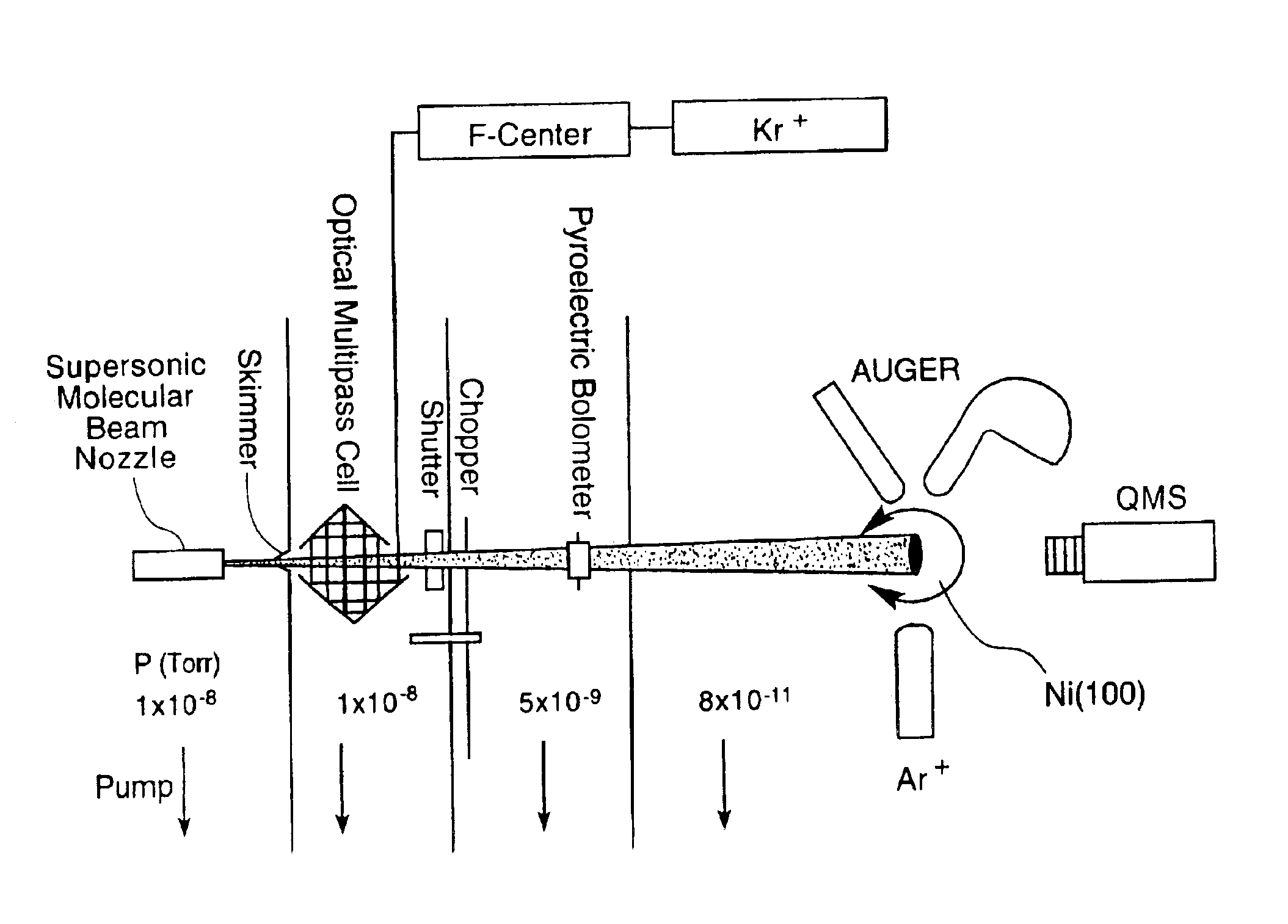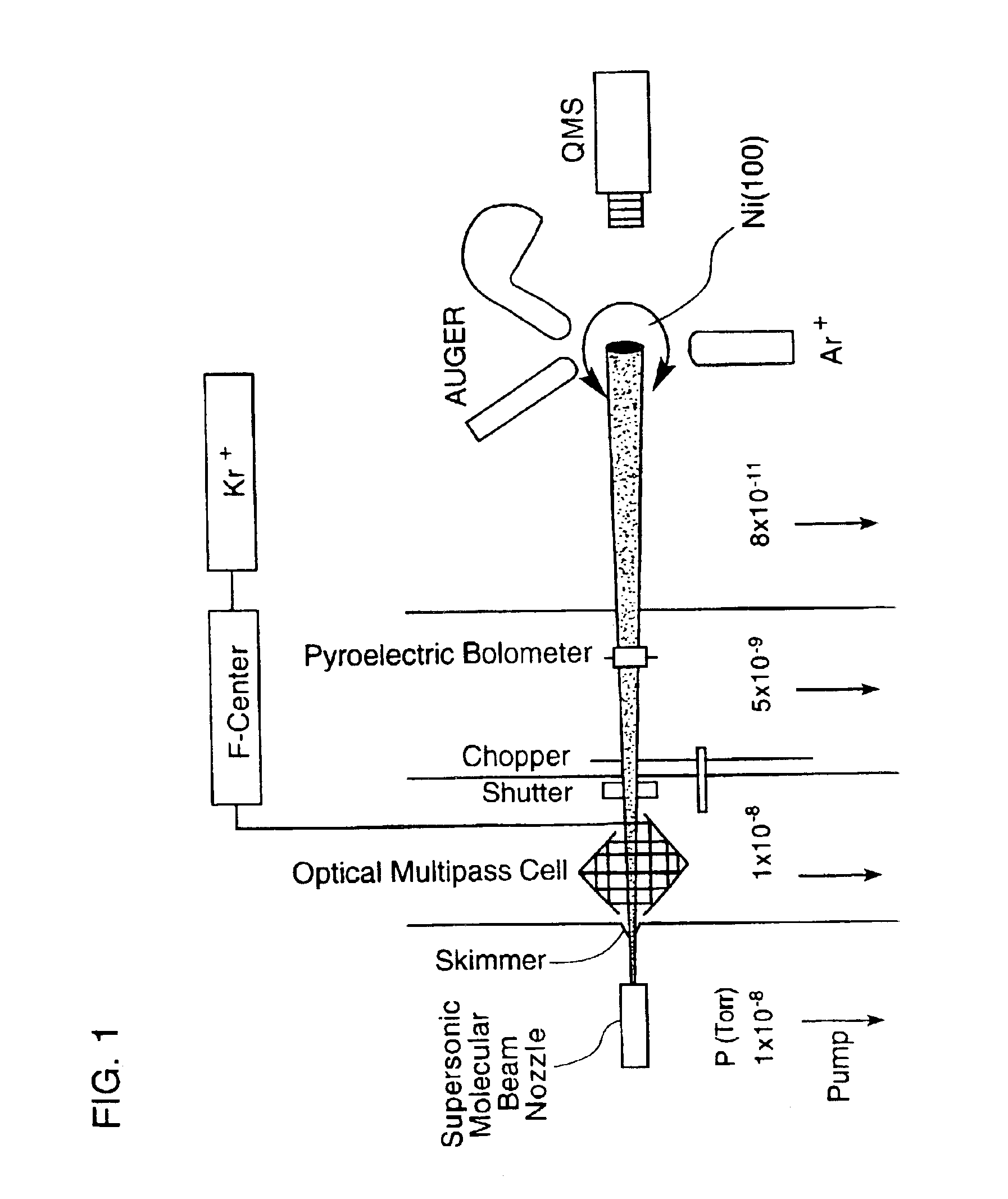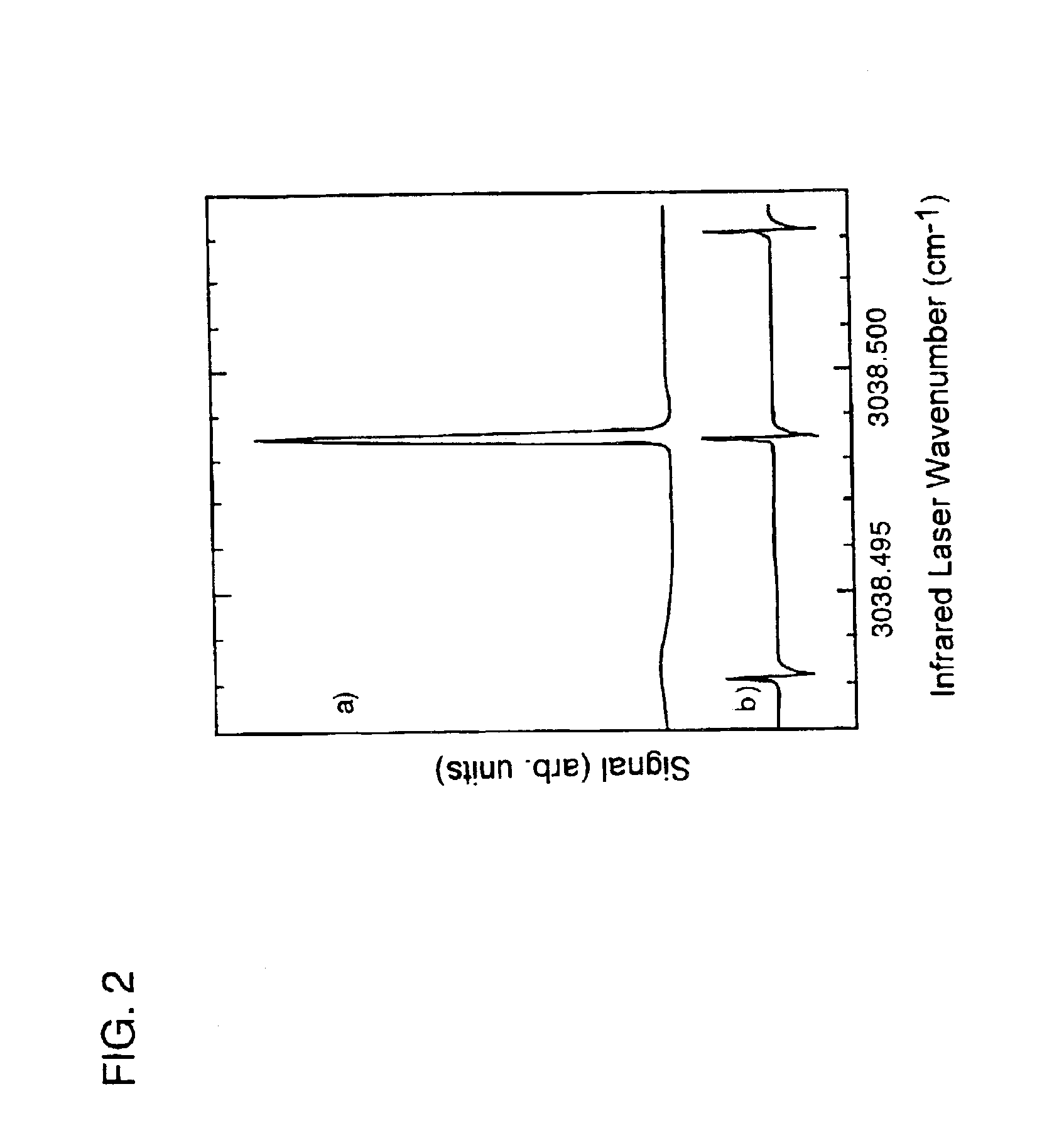Controlling surface chemistry on solid substrates
a surface chemistry and solid substrate technology, applied in the direction of crystal growth process, after-treatment details, polycrystalline material growth, etc., can solve the problems of limited control, overly broad reaction zone or lower than desired aspect ratio, complicating experimental efforts to unravel the reaction mechanism, etc., and achieve high substrate surface temperatures
- Summary
- Abstract
- Description
- Claims
- Application Information
AI Technical Summary
Benefits of technology
Problems solved by technology
Method used
Image
Examples
example 1
Spatially Resolved Deposition of Laser-Excited Methane Molecules onto a Nickel Substrate
[0087]Experimental Procedure
[0088]Supersonic molecular beams of methane (i.e., pure or seeded in hydrogen at a concentration of 0.25% or higher), were expanded from a heated nozzle source and triply differentially pumped prior to entering an ultrahigh vacuum (UHV) surface analysis chamber as described in McCabe et al. (Rev. Sci. Instrum., 7111:42-53, 2000). The UHV chamber housed a 1-cm diameter Ni(100) single crystal oriented to within 0.1° of the (100) plane, an electron gun and hemispherical electron energy analyzer for Auger electron spectroscopy measurements, a sputter gun for crystal cleaning, and a quadrupole mass spectrometer located on the molecular beam axis for time-of-flight analysis of the molecular beam. A schematic illustration of the apparatus appears in FIG. 1. The apparatus' design allows excitation of a significant fraction of the incident molecular beam into a single rovibrati...
example 2
Spatially Resolved Etching of a Semiconductor Surface by Laser-Excited Hydrogen Fluoride Molecules
[0099]A supersonic molecular beam of hydrogen fluoride (HF) diluted in an inert carrier gas expands from a nozzle source and is triply differentially pumped prior to entering an ultrahigh vacuum chamber containing a silicon substrate, as described in McCabe et al., (Rev. Sci. Instrum., 71(1):42-53, 2000). Infrared light crosses the molecular beam and excites HF molecules to a single rotational level of the first excited vibrational state. An orthogonal excitation geometry similar to that used in Example 1 allows a significant fraction of the HF molecules to be excited into a single excited rovibrational eigenstate using infrared laser radiation.
[0100]To quantify the enhanced reactivity of the laser excited molecules, a mass spectrometer in the chamber monitors the number of HF molecules scattered non-reactively from the silicon surface. The laser light irradiating the molecular beam is ...
PUM
| Property | Measurement | Unit |
|---|---|---|
| Fraction | aaaaa | aaaaa |
| Fraction | aaaaa | aaaaa |
| Time | aaaaa | aaaaa |
Abstract
Description
Claims
Application Information
 Login to View More
Login to View More - R&D
- Intellectual Property
- Life Sciences
- Materials
- Tech Scout
- Unparalleled Data Quality
- Higher Quality Content
- 60% Fewer Hallucinations
Browse by: Latest US Patents, China's latest patents, Technical Efficacy Thesaurus, Application Domain, Technology Topic, Popular Technical Reports.
© 2025 PatSnap. All rights reserved.Legal|Privacy policy|Modern Slavery Act Transparency Statement|Sitemap|About US| Contact US: help@patsnap.com



